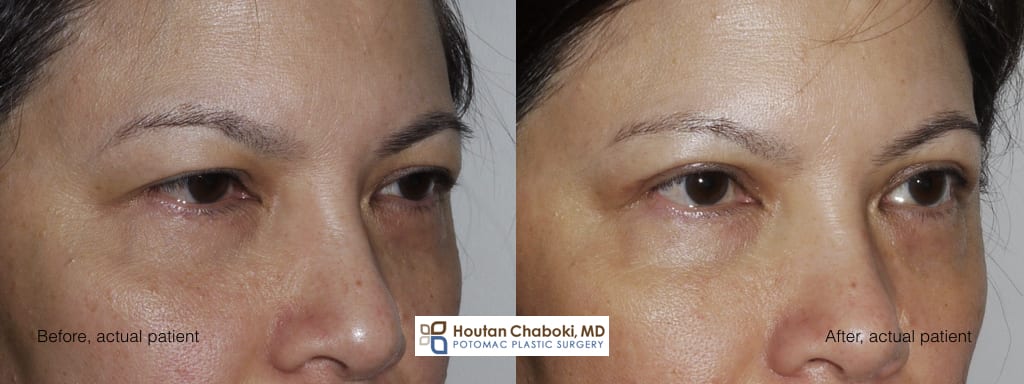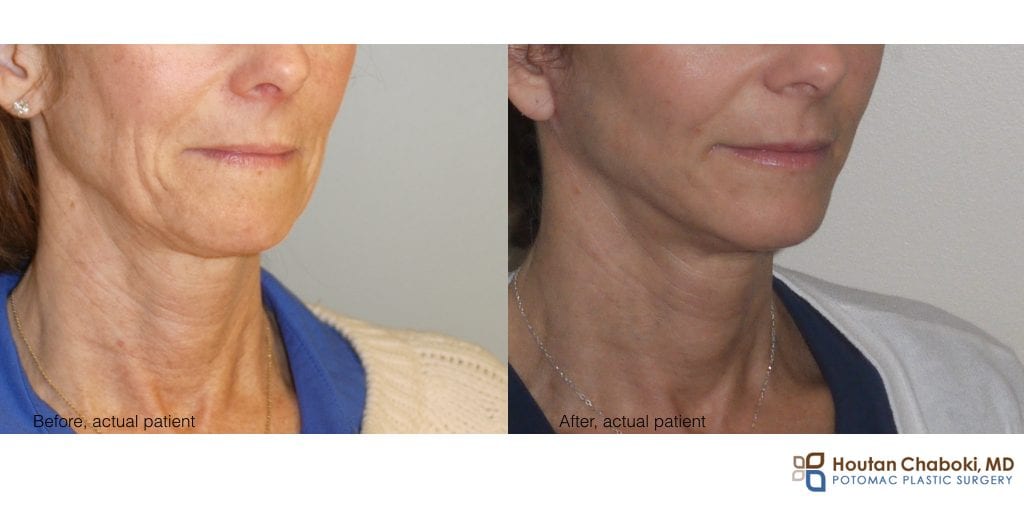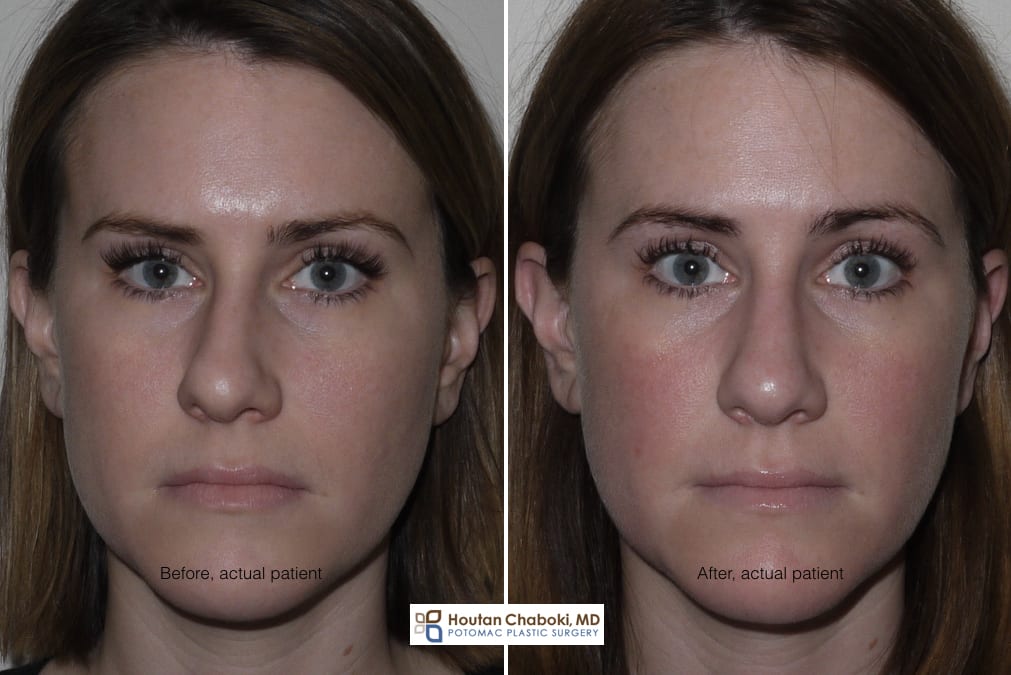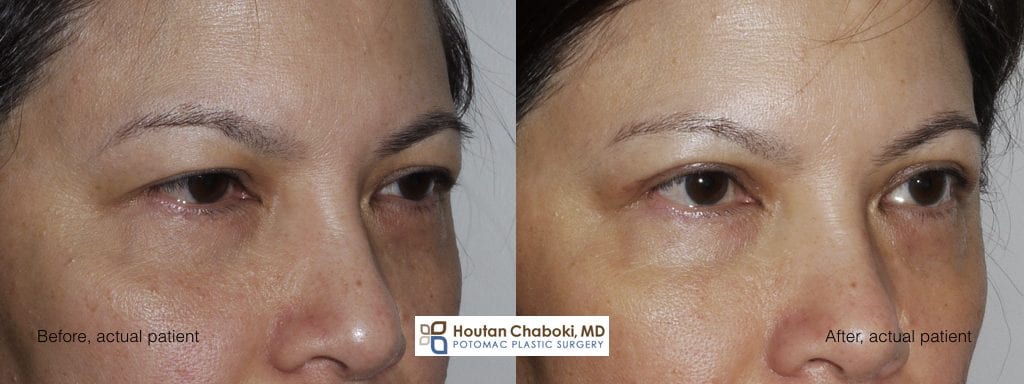
Upper eyelid surgery (blepharoplasty) may be performed via local anesthesia in appropriate patients.
Washington DC plastic surgery patients consider many factors when deciding on facial cosmetic surgery, and the type of anesthesia is a frequent question during consultation with a plastic surgeon. The decision on anesthesia is determined by multiple factors, including specific procedure, patient preference, and physician preference. Regardless, safety is always the primary factor.
Anesthesia is generally considered safe, especially on healthy patients.
The typical types of anesthesia in facial cosmetic surgery include
- local – patient is completely awake and alert. The treated area is numbed with injections, ice, and creams.
- sedation – patient is relaxed and partially awake with oral or IV medication. The level of sedation will vary from minimal to deeper.
- general – the patient is completely asleep and continuously monitored by a board-certified anesthetist.
Minor procedures in a limited body area that can be performed within a couple hours are more likely to be performed with less anesthesia. Complex surgery, large body regions, or prolonged surgery typically require more anesthesia. For procedures that utilize IV sedation or general anesthesia, then a board certified anesthetist is involved to monitor the patient and manage the anesthesia. Cosmetic procedures are performed in an accredited office or hospital facility.
In addition, each of these broad types of anesthesia have various responses by patients. For example, some patients can receive the bare minimum anesthesia and feel completely numb, while some need lots of medication to get any numbing effect.
Local anesthesia and plastic surgery
A large variety of plastic surgery procedures of the face, neck, and eyes can be performed via local anesthesia. Office procedures such as a liquid facelift with Botox®, Dysport®, Kybella®, and facial fillers are often performed with local anesthesia. Patients may return to back to the office immediately after treatment, if desired, for these nonsurgical treatments.
Many of the best plastic surgeons also perform several cosmetic surgical procedures with local anesthesia too. Examples of facial cosmetic surgery that can be performed with local anesthesia include:
- upper eyelid surgery (blepharoplasty) and Asian eyelid surgery
- ear reshaping (otoplasty)
- neck liposuction
- mini facelift
Sedation anesthesia and plastic surgery
Sedation involves oral or IV medication to relax patients and reduce pain. The level of sedation can be minimal, such as a single Valium® tablet, to more intensive with intravenous drugs and vital sign monitoring. Sedation, which may be referred to as “twilight anesthesia”, is commonly used in a variety of medical procedures, ex. colonoscopy. Local anesthesia is always added to any sedation anesthesia to maximize patient comfort.

Lower facelift surgery and fat grafting may be performed via sedation anesthesia in appropriate patients.
Anesthesia with sedation is probably one of the most common methods used by plastic surgeons for facial surgery. Examples of facial cosmetic surgery that is more often performed with sedation
- facelift
- neck lift
- brow lift
- lower eyelid surgery (blepharoplasty)
- fat injection
- buccal fat reduction
General anesthesia and plastic surgery
Patients are deeply sedated with respiratory support from a ventilatory machine. Some plastic surgeons only perform cosmetic surgery with patients completely asleep in this manner. Pretty much any cosmetic surgery can be performed on patients under general anesthesia. Newer anesthesia drugs and techniques known at Total IntraVenous Anesthesia (TIVA) and Enhanced Recovery After Surgery (ERAS) allow patients to recovery much more quickly than the older, traditional methods of general anesthesia.

Rhinoplasty and septoplasty with bone reshaping may be performed via general anesthesia in appropriate patients.
Ask your plastic surgeon about anesthesia and who will be administering the anesthesia. Similar to plastic surgery itself, anesthesia varies too. Whether you’re considering a facelift or an eyelid lift, there isn’t a “best” anesthesia.
The best plastic surgeons use various types of anesthesia for their cosmetic surgery patients. The choice of anesthesia is mutual between patient and surgeon for a safe and uneventful recovery after surgery.
Share your thoughts below.


Leave a Reply